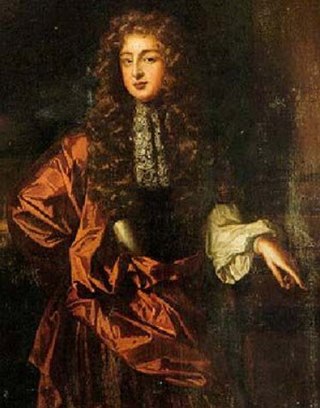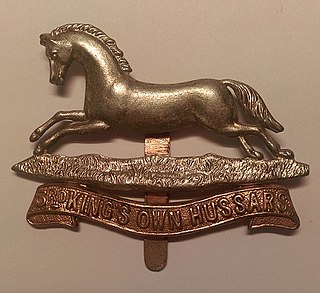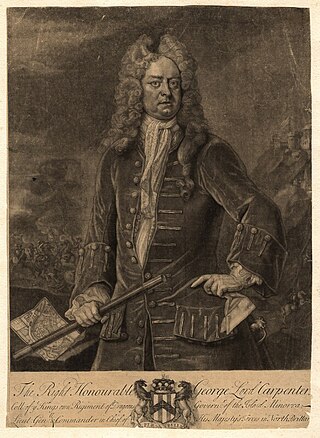
John Bellew, 1st Baron Bellew of Duleek (died 12 January 1692) was an Irish Jacobite soldier and politician. [2]

John Bellew, 1st Baron Bellew of Duleek (died 12 January 1692) was an Irish Jacobite soldier and politician. [2]
Bellew was the son of was son of Sir Christopher Bellew of Bellewstown and Frances Plunkett, a daughter of Matthew Plunkett, 7th Baron Louth. As a child he was sent to France for his safety during the Irish Rebellion of 1641, but he returned to Ireland in 1648 in the retinue of the Marquess of Ormonde, who gave him command of a troop of horse in the Royalist army. He was later appointed lieutenant of the ordnance in Ireland. He was present at the Battle of Rathmines during the Irish Confederate Wars. Bellew subsequently had his Irish estates, totalling 6,000 acres in County Louth and County Meath, seized by the Commonwealth of England under the Act for the Settlement of Ireland 1652. Bellew was transplanted to Connaught. [2]
Upon the Stuart Restoration, Bellew was restored to his estates in October 1660 and was knighted in 1661. A Roman Catholic, he was made a member of the Privy Council of Ireland in 1685 and on 29 October 1686 he was created Baron Bellew of Duleek by James II of England. [3] Bellew attended the Irish House of Lords during James II's short-lived Patriot Parliament in 1689. [4] He raised a regiment of infantry for the Jacobite army during the Williamite War in Ireland. In April 1691 he was attainted by the Williamite regime. He fought at the Battle of Aughrim in July 1691, at which he was severely wounded and taken prisoner. [5] Bellew died of his wounds in captivity in England the following year in January 1692. [2] He was buried in St. Mary's Abbey, Duleek.
On 28 November 1663, Bellew had married Mary (or Margaret) Bermingham. He was succeeded in his title by his eldest son, Walter, although due to the attainder, Walter's title was not recognised outside Jacobite circles. After Walter's death in 1694, the attainder was reversed on 30 March 1697 for Richard Bellew. [2]

The Battle of the Boyne was a battle in 1690 between the forces of the deposed King James II, and those of King William III who, with his wife Queen Mary II, had acceded to the Crowns of England and Scotland in 1689. The battle took place across the River Boyne close to the town of Drogheda in the Kingdom of Ireland, modern-day Republic of Ireland, and resulted in a victory for William. This turned the tide in James's failed attempt to regain the British crown and ultimately aided in ensuring the continued Protestant ascendancy in Ireland.

The Williamite War in Ireland took place from March 1689 to October 1691. Fought between supporters of James II and his successor, William III, it resulted in a Williamite victory. It is generally viewed as a related conflict of the 1688 to 1697 Nine Years' War.

The Battle of Aughrim was the decisive battle of the Williamite War in Ireland. It was fought between the largely Irish Jacobite army loyal to James II and the forces of William III on 12 July 1691, near the village of Aughrim, County Galway.
This is a list of people who have served as Lord Lieutenant of Louth.

Godard van Reede, 1st Earl of Athlone, Baron van Reede, Lord of Ginkel, born in the Netherlands as Baron Godard van Reede, was a Dutch general who rose to prominence during the Williamite War in Ireland.

Claud Hamilton, 4th Earl of Abercorn PC (Ire) (1659–1691) was a Scottish and Irish peer who fought for the Jacobites in the Williamite War. He went with King James to Derry in 1689 and tried to negotiate the surrender of the town with Adam Murray. He raised a regiment of horse that he led in the defeats of Newtownbutler in 1689 and Aughrim in 1691. He was killed when the ship that should have brought him to France was intercepted by a Dutch privateer.
Nicholas Purcell, 13th Baron of Loughmoe was the son of James Purcell of Loughmoe and the maternal nephew of James Butler, 1st Duke of Ormonde.

The 3rd Hussars was a cavalry regiment of the British Army, first raised in 1685. It saw service for three centuries, including the First and the Second World Wars, before being amalgamated with the 7th Queen's Own Hussars, to form the Queen's Own Hussars in November 1958.
John Barrett was a colonel and head of the barony of the Cork Barrett family.

Lieutenant-General George Carpenter, 1st Baron Carpenter was a British Army officer, Whig politician and peer. He served as Commander-in-Chief, Scotland from 1716 to 1724 and as a member of parliament from 1715 to 1727.

Colonel Thomas Butler of Garryricken, also known as Thomas Butler of Kilcash was an Irish Jacobite soldier. He commanded a regiment, Thomas Butler's foot, during the Williamite War and fought at the Battle of Aughrim in 1691 where he was taken captive. His son John would, de jure, become the 15th Earl of Ormond.
Colonel Gordon O'Neill, was an officer in King James II's Irish army who fought at the Siege of Derry, the Battle of the Boyne, and the Battle of Aughrim for the Jacobites.
Mark Talbot was an Irish soldier and politician. He was born in Ireland and served in the French army during a time when Irish Catholics were prohibited from serving in the Irish and English armies. His father rose in prominence during the reign of the Catholic James II of Ireland, who purged Protestants from the military and replaced them with Catholics.

William Dorrington was an English army officer. Contemporary sources often spell his surname as "Dorington", or "Dodington".
Richard Brewer was an English army officer of the seventeenth century. In 1688, Brewer took part in the Army Plot against James II during the Glorious Revolution.

The Danish Auxiliary Corps was a corps of 7,000 Danish soldiers sent to fight with William of Orange who was at war in Ireland. Disappointed with his alliance with France's King Louis XIV, Christian V of Denmark in 1689 entered into a treaty of military assistance with King William III of England. The corps was transported to Ireland, fighting against the Jacobites, participating in the battles of the Boyne and Aughrim, as well as the sieges of Limerick, Cork, Kinsale, Athlone, and Galway. In early 1692 the corps was transported to Flanders for future service in English pay.
The Lord Grand Prior's Regiment, also known as Fitzjames' Regiment and as the Regiment of the Marine, was an infantry regiment originally raised in Ireland to fight for the deposed monarch James II during his war against his successor, William of Orange. While technically classed as a regiment of marines for much of its existence, as James possessed no navy it generally fought as conventional infantry. Its colonel was James's illegitimate son Henry Fitzjames, Grand Prior of the Knights of Malta, although in practice field command was delegated to an experienced lieutenant-colonel.
Matthew Plunkett, 7th Baron Louth was an Irish Jacobite soldier and peer.
William Bourke, 8th Baron Bourke of Connell was an Irish Jacobite peer.
Richard Bellew, 3rd Baron Bellew of Duleek was an Irish soldier, peer and politician.
BELLEW, John, LORD BELLEWSTOWN. Colonel, Lord John Bellew's Regiment of Infantry. He was appointed one of James the Second's earliest Councillors. He was taken prisoner at Aughrim, shot in the belly, and was so severely wounded that he died the following January (12 January 1692). Outlawed in 1691.